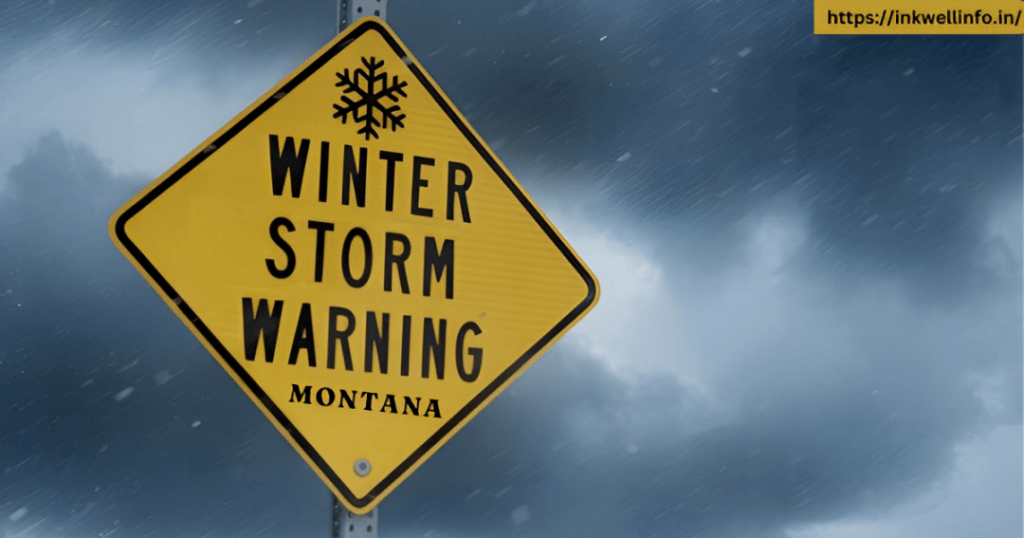1. Winter Storm Warning Montana
Definition and Purpose of Warnings
Winter storm warning montana are crucial notifications issued to keep residents and travelers informed about severe weather conditions that could pose risks. They alert people when significant snowfall or icy conditions are expected, allowing them to prepare accordingly. The National Weather Service (NWS) plays a vital role in issuing these warnings based on weather data and expertise. Timely warnings are essential for safety, safeguarding lives, and helping communities respond effectively to harsh conditions.
2. The Different Types of Winter Weather Alerts
Montana residents should be aware of the various types of winter weather alerts to understand the severity of upcoming conditions:
- Winter Storm Watch: Conditions are favorable for severe winter weather, but forecasts are uncertain.
- Winter Storm Warning: A significant Winter storm warning montana is imminent or active, requiring immediate action.
- Blizzard Warning: This warning indicates winds of 35 mph or more, alongside heavy snowfall that creates dangerous visibility conditions.
- Ice Storm Alert: Issued when freezing rain is expected, potentially causing hazardous travel and power outages.
Each alert comes with specific criteria, and knowing the distinctions can make all the difference in winter safety.
3. Importance of Staying Informed
Staying updated on winter weather is paramount. Weather changes can impact daily life, from canceled plans to school closures. Understanding weather advisories helps residents prepare both mentally and physically. Preparedness reduces panic and ensures safety. It’s important to use reliable resources like local news, weather apps, and the NWS website to stay informed about changing conditions.
4. Historical Context of Winter Storm Warning Montana
Notable Winter Storms in Montana’s History
Montana has a rich history of winter storms, with some notable events leaving lasting impacts. For example, the winter of 1955-56 saw extreme snowfall, resulting in road closures and power outages that affected thousands. Such storms teach us valuable lessons about readiness and communities’ ability to respond.
5. Climate Patterns Affecting Winter Weather
Montana’s diverse geography, with mountains and plains, influences storm formation. As climate change affects weather patterns, Montana faces shifts in the timing and intensity of winter storms. This ongoing variability reminds us that preparation is crucial, as no two winters are the same.
6. Statistical Data on Winter Storm Frequency
Analyzing historical data shows a pattern of Winter storm warning montana peaking from December to February, with certain regions experiencing more frequent storms. Bitterroot Valley and parts of northeastern Montana often see the heaviest snowfall. Understanding these trends can assist residents in predicting potential weather challenges.
7. Preparing for a Winter Storm
Home Preparedness Measures
Preparing your home for Winter storm warning montana can make a big difference. Here’s a checklist to consider:
- Keep an emergency kit with essentials like water, non-perishable food, first-aid supplies, and flashlights.
- Insulate your home to prevent heat loss and ensure pipes don’t freeze.
- Have battery-operated heaters on hand and confirm that your generator works to maintain essential power during outages.
8. Vehicle Preparedness
Winterizing your vehicle is just as important as preparing your home. Consider the following:
- Check your tires to ensure they have enough tread for slippery roads.
- Keep an emergency kit in your car, including blankets, snacks, and shovels.
- Practice safe driving techniques by reducing speed and allowing extra stopping distance on icy roads.
9. Community and Family Planning
Establishing a family emergency plan can streamline response during a storm. Include:
- A communication plan detailing how to reach each other if separated.
- Meeting places in case of evacuation or power outages.
- Knowledge of local shelters and resources for community assistance during severe weather.
10. Navigating Winter Storm Warning Montana: What to Do
Understanding Alert Notifications
When a winter storm warning Montana is issued, it’s important to understand the specifics. Check reliable sources like the NWS for alerts that provide details on timing and severity. Always verify information across multiple trusted platforms to avoid confusion.
11. Safety Measures During a Winter Storm
Once a warning is received, prioritize safety:
- Stay indoors if possible and keep heat levels up by closing off unused rooms.
- If you must travel, avoid driving during peak storm conditions, and always inform someone about your travel plans.
- Familiarize yourself with local evacuation protocols in case conditions worsen.
12. Post-Storm Considerations
After a storm, consider the following:
- Assess your property for damage, and report any downed power lines to authorities.
- Seek help from local organizations if you need assistance recovering.
- Reflect on how well you and your community managed the storm, finding ways to improve for future events.
13. Resources and Support Systems in Montana
National Weather Service Resources
The NWS offers vital resources, including:
- Accurate forecasts and real-time alerts for Montana residents.
- Educational materials to help understand winter weather risks.
- Access to local weather stations for the most localized information.
14. Local Government and Emergency Services
Local authorities play a key role in storm responses. Keep a list of emergency services contact information handy, including local fire and police departments. Familiarize yourself with community action plans to know how to help during emergencies.
15. Nonprofit Organizations and Community Initiatives
Many organizations assist during winter storms:
- Local food banks provide essential supplies to those in need.
- Nonprofits like the Red Cross often lead community programs aimed at supporting vulnerable populations.
- Consider volunteering or donating to these organizations during the winter season.
Final Thoughts
In summary, understanding winter storm warnings and preparing accordingly can significantly enhance safety and well-being during harsh weather in Montana. Keep informed, stay prepared, and look out for one another in these challenging times.
Frequently Asked Questions (FAQs)
What should I do first if a winter storm warning is issued? First, stay informed through reliable sources and prepare your home and vehicle for the storm.
How can I prepare my pets for a winter storm ? Ensure they have plenty of food, water, and a warm place to stay. Keep them indoors whenever possible.
Are there any resources for financial assistance during winter storms? Local government agencies and nonprofits often provide assistance programs for those impacted by severe weather.
How do I stay updated on changing weather conditions during a storm? Utilize weather apps, local news, and the NWS website for real-time updates.
What are the legal responsibilities of property owners during snow and ice events? Property owners may be responsible for ensuring sidewalks and driveways are safe and clear, depending on local ordinances.
FOR MORE VISIT, INKWELLINFO.IN




Pingback: What Makes Ryan Corey Robinson Den Bok a True Visionary?
Pingback: What Makes Hoptraveler.com Travel Lifestyle So Unique in 25?